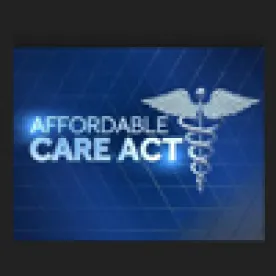Section 1557 of the Affordable Care Act (“ACA”), in effect since 2010, prohibits discrimination in any federally funded health program on the basis of race, national origin, sex, age, or disability. The Department of Health and Human Services (“HHS”), through the Office of Civil Rights, has been enforcing the provision since it was enacted in 2010. HHS has now issued the Final Rule, “Nondiscrimination in Health Programs and Activities,” providing guidance to covered entities affected by the civil rights provision. The Final Rule requires certain covered entities to include specific nondiscrimination protections in their benefit plan design by the first day of the first plan year, beginning on or after January 1, 2017.
The Final Rule applies to “every health program or activity, any part of which receives Federal financial assistance provided or made available by the Department,[1] every health program or activity administered by the Department [HHS]; and every health program or activity administered by a Title I entity.”[2]
Under the Final Rule, “Federal Financial Assistance” means any “grant, loan, credit, subsidy, contract (other than a procurement contract but including a contract of insurance),” or any other type of arrangement in which assistance is provided or made available by the federal government in the form of funds, services of federal personnel, or real or personal property (including property use or interest in property). The definition of “Federal Financial Assistance” also means any federal financial assistance HHS provides or makes available,
[I]ncluding Federal financial assistance that the Department plays a role in providing or administering, including all tax credits under Title I of the ACA, as well as payments, subsidies, or other funds extended by the Department to any entity providing health-related insurance coverage for payment to or on behalf of any individual obtaining health-related insurance coverage from that entity or extended by the Department directly to such individual for payment to any entity providing health-related insurance coverage.[3]
Health programs or activities conducted by the Department (HHS), include programs administered by the Centers for Medicare and Medicaid Services (“CMS”), Health Resources and Services Administration (“HRSA”), Centers for Disease Control and Prevention (“CDC”), Indian Health Services (“IHS”) (including IHS tribal hospitals), and the Substance Abuse and Mental Health Services Administration (“SAMHSA”). Entities established under Title I of the ACA are the seventeen state-based and 34 federally-facilitated health insurance marketplaces.
Under the Final Rule, a “covered entity” means:
-
An entity operating a health program or activity that receives Federal financial assistance for any part of the health program or activity;
-
An entity established under Title I of the ACA that is administering a health program or activity; or
-
The Department [HHS].[4]
Section 92.208 of the Final Rule, “Employer liability for discrimination in employee health benefit programs,” provides that a covered entity providing an employee health benefit program to employees will be liable under § 1557 only when:
-
The entity is principally engaged in providing or administering health services, health insurance coverage, or other health coverage;
-
The entity receives Federal financial assistance a primary objective of which is to fund the entity’s employee health benefit program; or,
-
The entity is not principally engaged in providing or administering health services, health insurance coverage, or other health coverage, but operates a health program or activity, which is not an employee health benefit program, that receives Federal financial assistance; except that the entity is liable under this part with regard to the provision or administration of employee health benefits only with respect to the employees in that health program or activity.
Application to State Agencies Receiving Federal Funds
As noted in the Summary to the Final Rule,[5] the limitations of § 92.208 were not restricted or revised in any manner from the original version of the section as set forth in the proposed rule, which provided that “unless the primary purpose of the Federal financial assistance is to fund employee health benefits, we propose to not apply Section 1557 to an employer’s provision of employee health benefits where the provision of those benefits is the only health program or activity operated by the employer.” As explained further in the preamble, if an organization “uses grant funds to support personnel costs, including employee health benefits, Section 1557 would not apply to the organization’ s provision of employee health benefits.”[6]
Based on the definitions and summary explanations provided in the Final Rule, a state agency receiving non-HHS grant funds that may be applied in part for supporting personnel costs that would include employee health benefits would not be subject to liability under § 1557 of the ACA. Under the Final Rule, § 1557 liability will not attach to such an agency unless the agency is either 1) principally engaged in providing or administering health services or coverage or operating a health program or activity; or, 2) receives federal financial assistance for which a primary objective is to fund the agency’s employee health benefit program.
[1] “Department” means the “U.S. Department of Health and Human Services.” Final Rule, p. 334.
[2] Final Rule, § 92.2 Application, p. 330-31.
[3] Id., § 92.4 Definitions, p. 334-35.
[4] Final Rule, § 92.4 Definitions, p. 333.
[5] Id., p. 226.
[6] 80 Fed. Reg. 173, at 54191, Preamble to the proposed rule.




 />i
/>i
